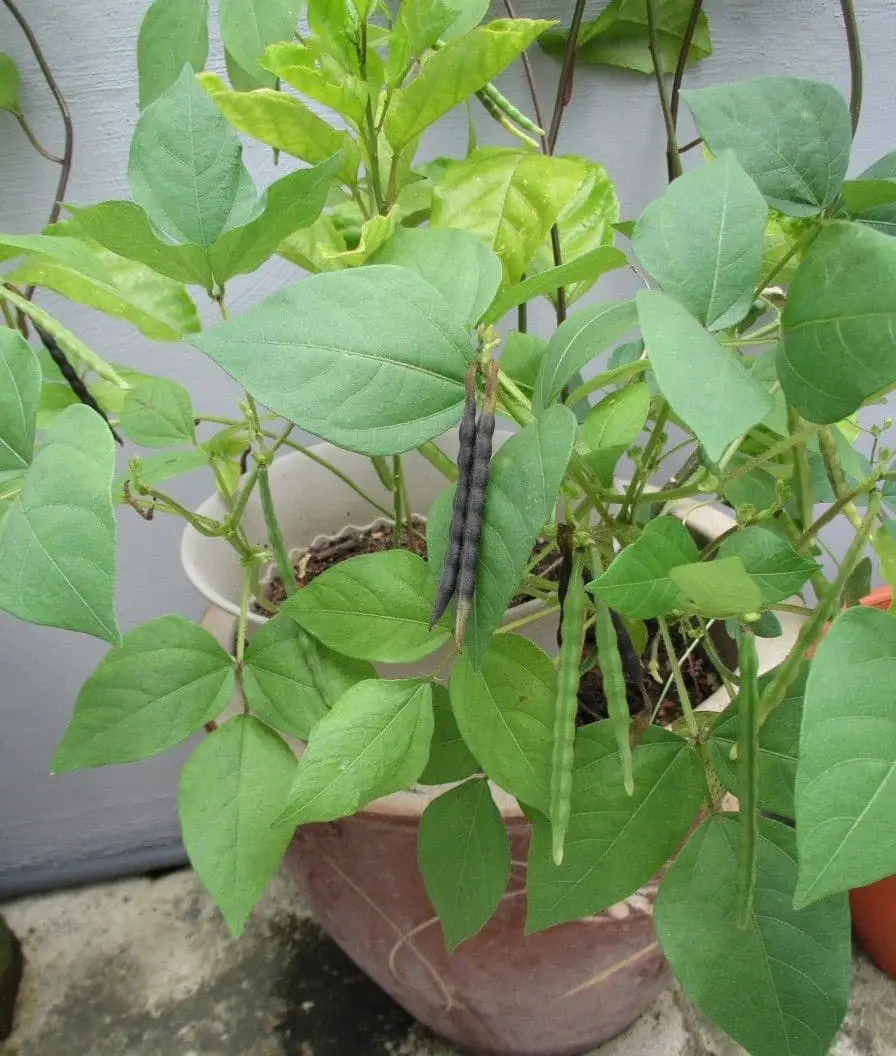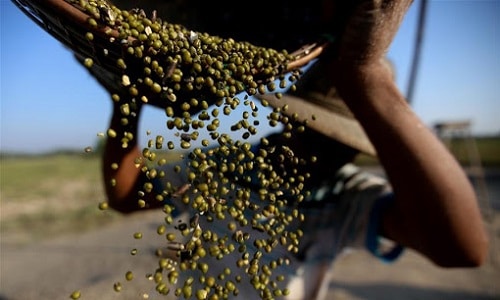Growing Mung Beans in Pots is an inexpensive way to add essential nutrients to your table! Here is all you need to know to grow this powerhouse of proteins!
Easy to grow and full of proteins, mung beans are a great option for vegans. Growing Mung Beans in Pots is the best way to relish their taste when they’re freshly harvested from containers! Add to your salads after sauteeing in olive oil or roast in butter after sprouting, you can enjoy them fresh in both ways!
Botanical Name: Vigna radiata
Common Names: Mung bean, Golden gram, Jerusalem pea, Moong bean, Green gram, Celera bean, Mungbean, Mungbohne, Jerusalembohne, Frijol mungo, Judía mungo, Poroto chino
Check out our article on best types of beans you can grow here
Planting Time
Native to India and southeast Aisa, it does well in warm temperatures. Spring and Summer is the best time to plant mung beans.
Growing Mung Beans in Pots

Growing mung beans in pots is a straight and easy process. Just plant seeds half an inch deep and space them 2 inches apart. You can also grow these beans with broccoli, cabbage, cauliflower, carrots, kale, celery, and peas as they are some of the best companion plants.
Choosing a Container
Before choosing a pot, you need to know that the plant has a long root system. Choosing a container that accommodates it well will do the trick. A 4-6 inches pot will be a great starting size for varieties like Berken and Texsprout.
Requirements for Growing Mung Beans in Pots

Location
Being a warm-season crop, they do best in brightly lit areas. Placing the pot where it gets 6-8 hours of sunlight will result in thicker and fuller growth of beans.
Soil
If you want to see your plants thrive, use well-draining soil. Sandy, loam soils with a pH of 6.2 and 7.2 are going to serve best.
Watering
Water moderately and keep the soil moist. As the beans grow best with average watering, overwatering the plants may result in a poor crop. Also, avoid wetting the foliage as it may attract fungal diseases.
Taking Care of Mung Beans in Pots
Fertilizing
Like other legumes, mung beans can take care of their nitrogen requirements. You just have to supplement phosphorus and potassium to the plant. A 5-10-10 blend will work fine. Do refer the label for dosage and intervals.
Pests and Diseases
The plant may be subjected to attacks from thrips, chickpea leafminers, pod borers, grasshoppers, and aphids. Using insecticidal soap will take care of them.
Ascochyta blight, root rot, and stem rot are common diseases that can be prevented by avoiding overwatering and wetting the foliage.
Harvesting and Storage

The plant will be ready to harvest in 90-110 days or when it reaches a height of 16-20 inches. Take out the entire plant and hang it upside down in a garage or shed to dry. Once dry, you can collect the beans and store them in airtight containers.
Health Benefits of Mung Beans
- Mung beans are a great source of essential nutrients and contain 7 grams of protein per 100 grams.
- The beans also have antifungal, anti-inflammatory, and antimicrobial activity.
- Rich in magnesium, vitamin B6, folate, potassium, and fiber, they can be of great help for women during PMS and pregnancy.


